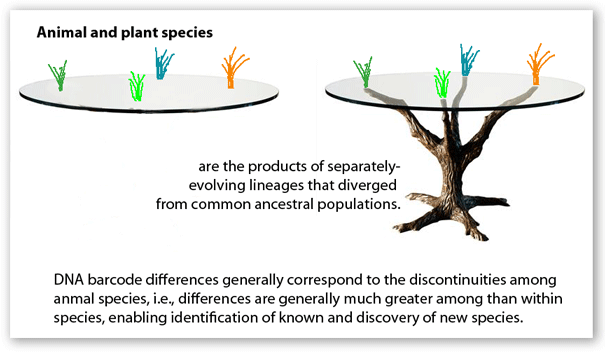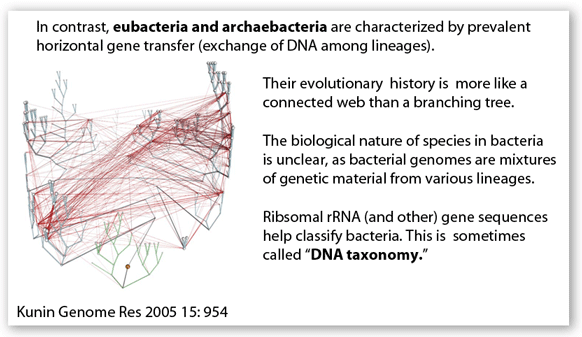Naming names faster (addendum)
In yesterday’s post I placed “integrative taxonomy” on a spectrum with morphologic taxonomy at one end and “DNA taxonomy” as applied to eubacteria/archaebacteria at the other. Mehrdad Hajibabaei pointed out that bacterial diversity is not partitioned into species in the same way it is in animals and plants. Eubacteria/archaebacteria have relatively fluid genomes with frequent exchange of DNA among lineages. Fewer than 10,000 bacterial species have been named, although their diversity is certainly vaster than all eukaryotes (2 million named species). Thus DNA-based classification of bacteria, at least as presently applied, does not meet the goals of DNA barcoding, which aims to capture species-level differences.
This entry was posted on Saturday, August 21st, 2010 at 12:11 am and is filed under General. You can follow any responses to this entry through the RSS 2.0 feed. Both comments and pings are currently closed.

